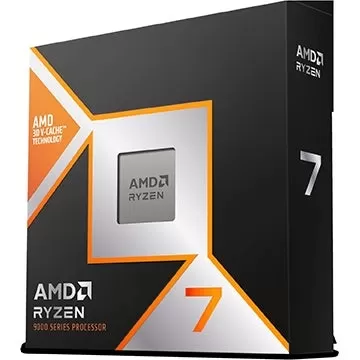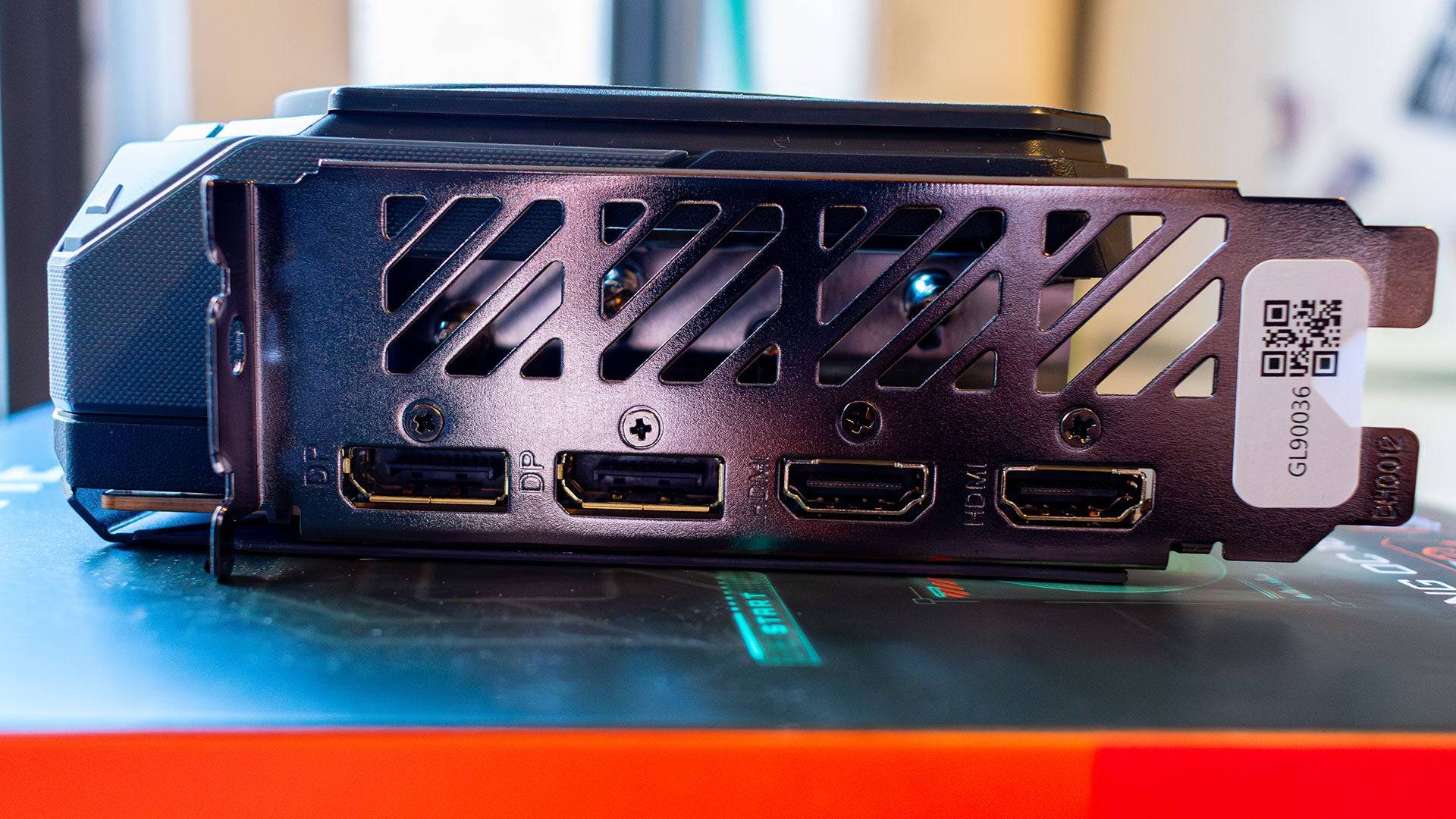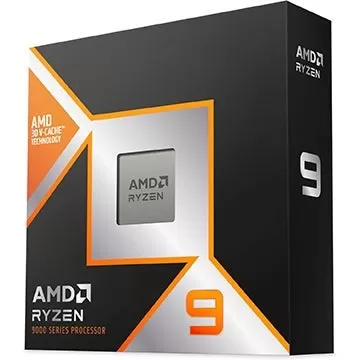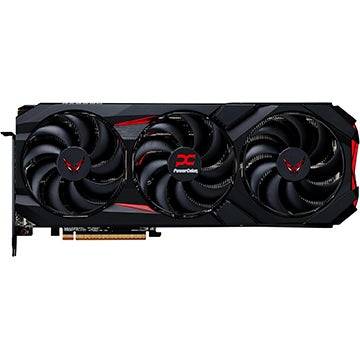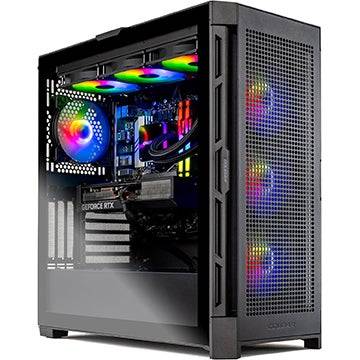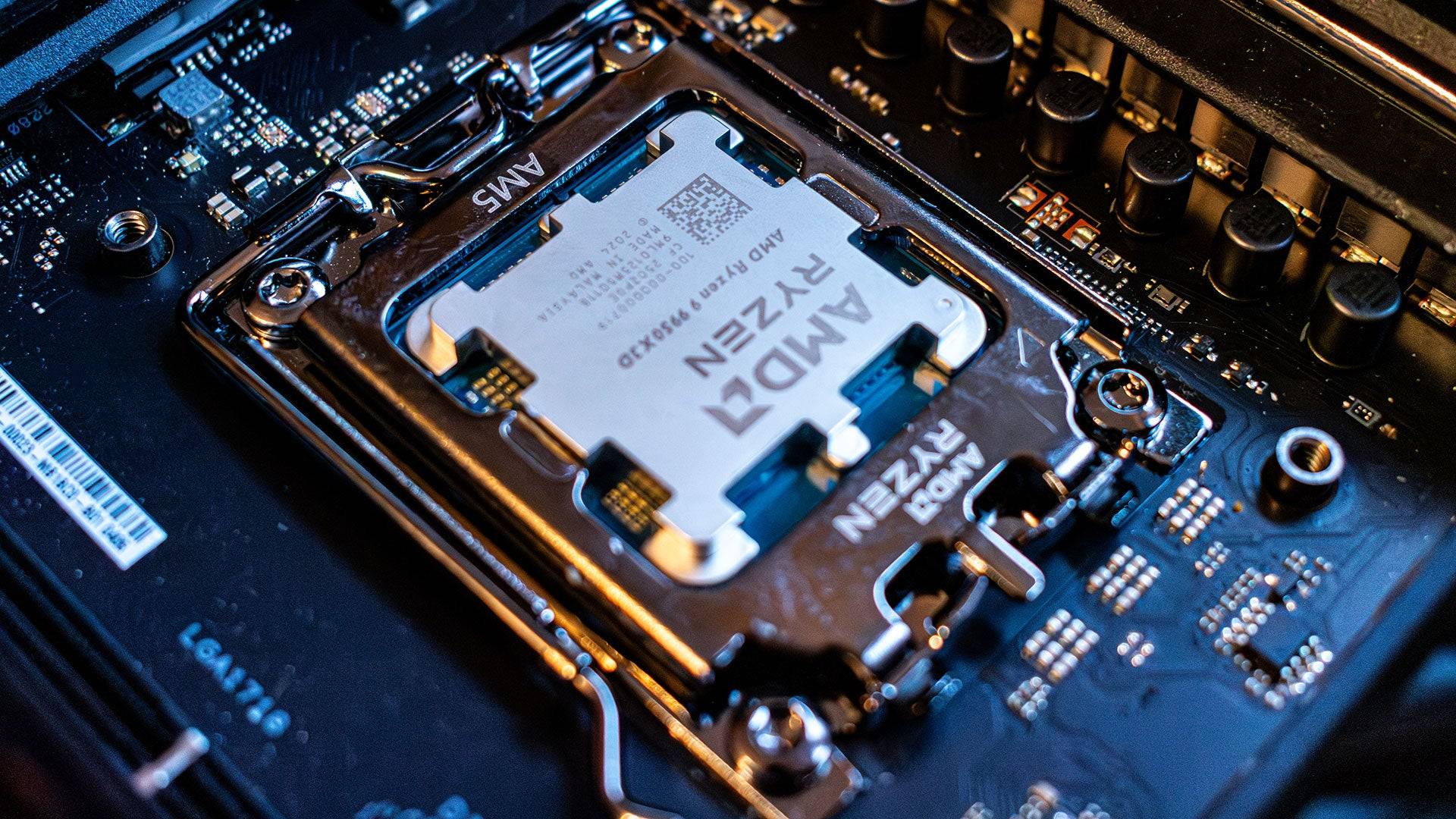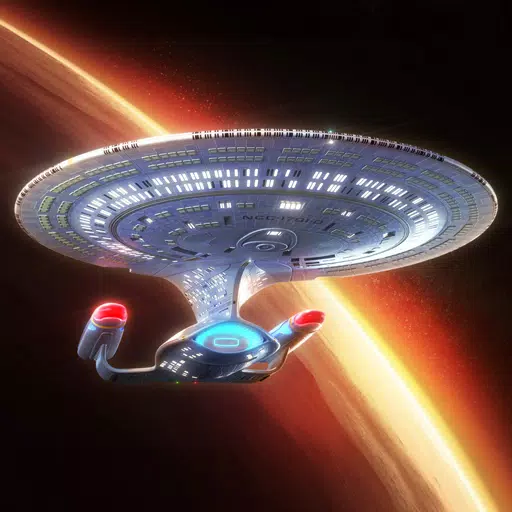For the last couple of generations, AMD has been fiercely competing with Nvidia at the high end of the GPU market. Now, with the AMD Radeon RX 9070 XT, Team Red has strategically shifted its focus, conceding the ultra-high-end to the RTX 5090 and instead aiming to deliver the best graphics card for the majority of gamers – a goal it undoubtedly achieves.
The AMD Radeon RX 9070 XT, priced at $599, is a formidable contender against the $749 GeForce RTX 5070 Ti. This competitive pricing alone positions it as one of the best GPUs available today, but AMD enhances the value proposition with FSR 4, introducing AI upscaling to an AMD graphics card for the first time. This makes the RX 9070 XT the ideal choice for 4K gaming, especially for those unwilling to splurge $1,999 on the RTX 5090.
Purchasing Guide
The AMD Radeon RX 9070 XT will be available starting March 6 at $599. Be aware that prices may vary, as third-party cards could be more expensive. Aim to purchase one for under $699 to get the best value.
AMD Radeon RX 9070 XT – Photos
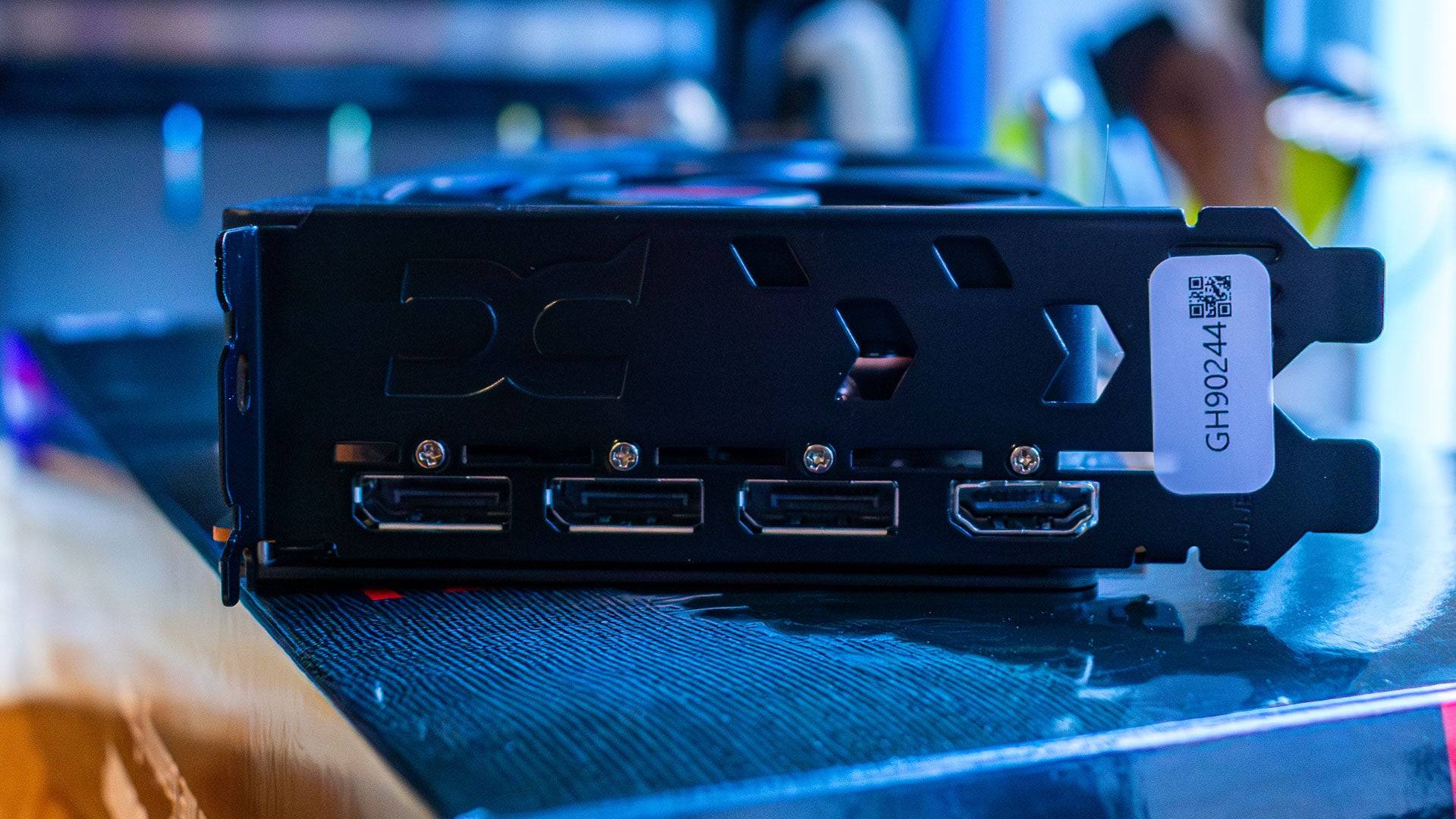
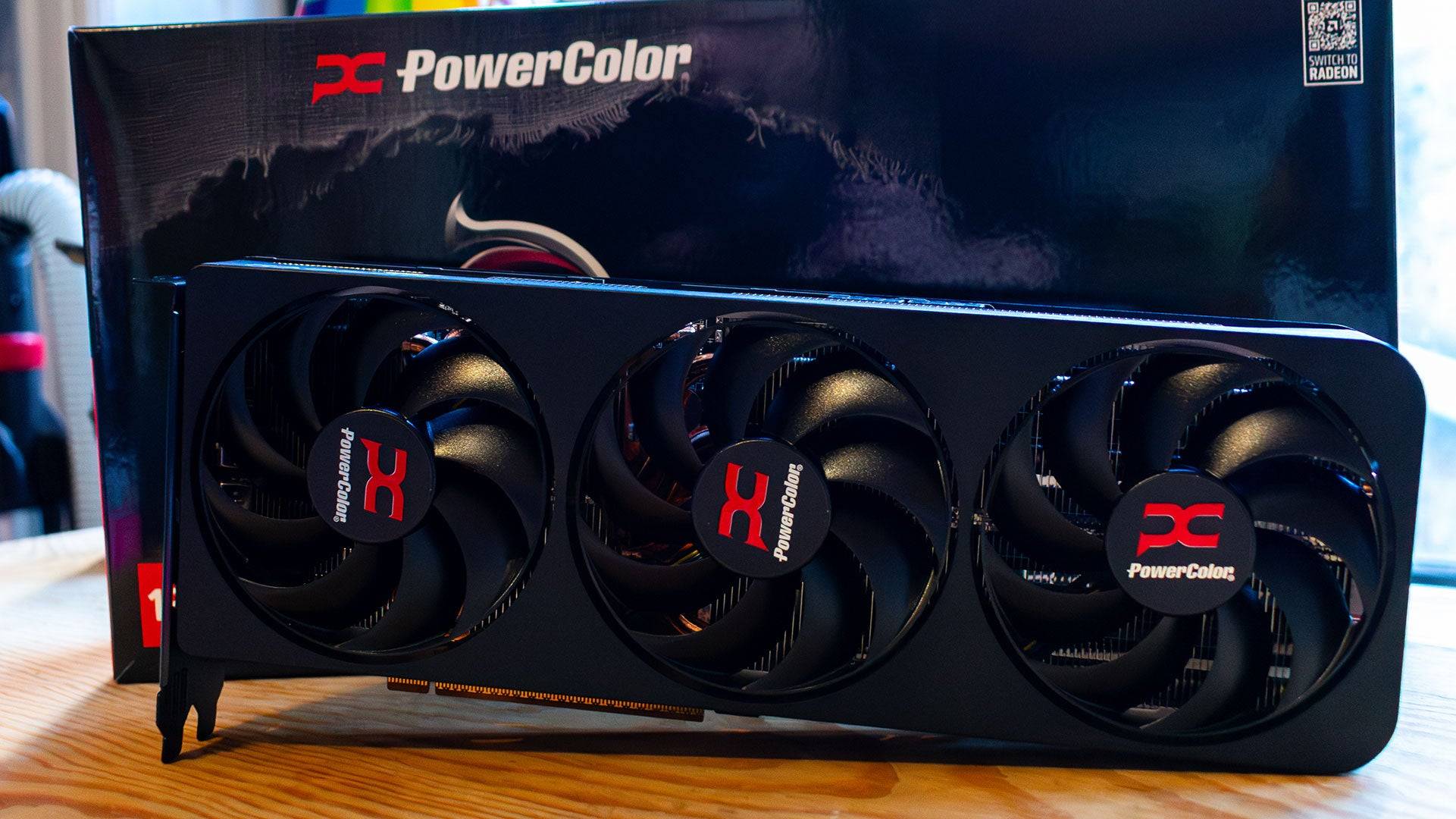 4 Images
4 Images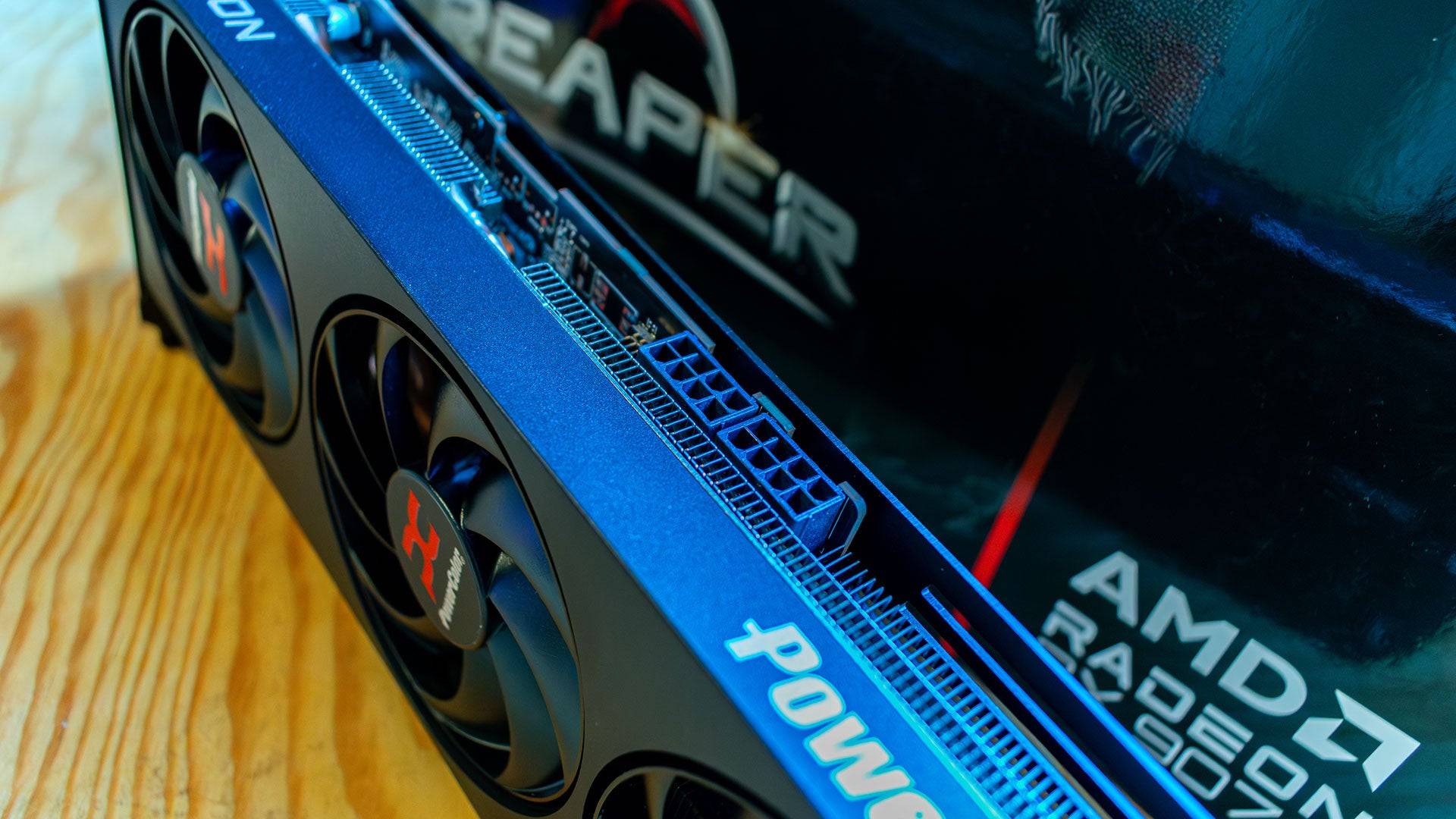
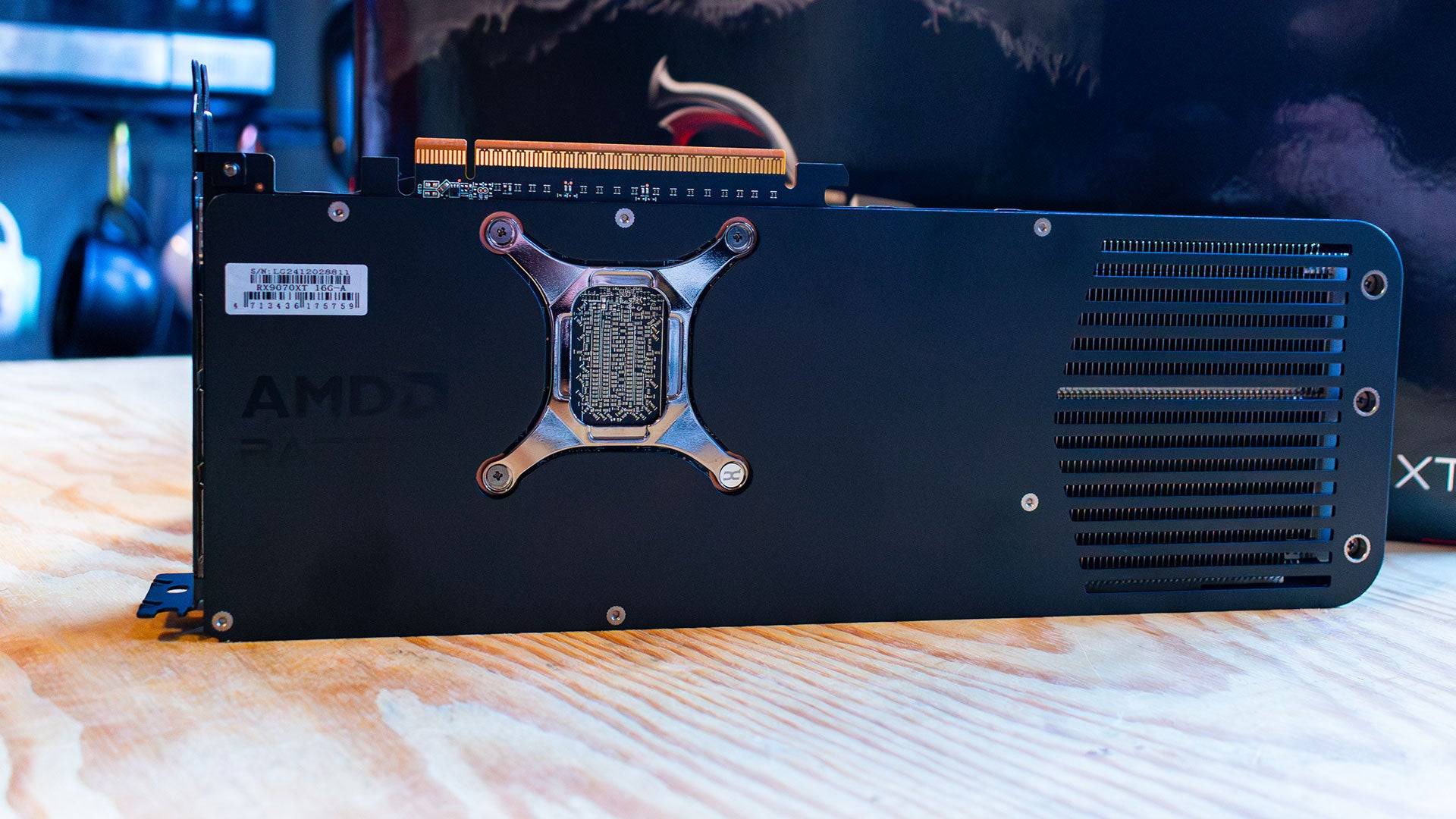
Specs and Features
Built on the RDNA 4 architecture, the AMD Radeon RX 9070 XT showcases significant advancements in its shader cores, but the real highlight is the new RT and AI Accelerators. The AI Accelerators power FidelityFX Super Resolution 4 (FSR 4), marking the debut of AI upscaling on AMD GPUs. While FSR 4 may not boost framerates over FSR 3.1, it significantly enhances image accuracy, improving visual quality. For those prioritizing framerates, the Adrenalin software offers an option to disable FSR 4.
AMD's improvements to the shader cores result in superior per-core performance. Despite having fewer Compute Units (64) than the previous Radeon RX 7900 XT (84), the RX 9070 XT delivers a substantial generational performance increase at a more accessible price point. Each Compute Unit contains 64 Streaming Multiprocessors (SMs), totaling 4,096, alongside 64 ray accelerators and 128 AI accelerators.
However, the RX 9070 XT comes with less memory than its predecessor, featuring 16GB of GDDR6 on a 256-bit bus, compared to 20GB on a 320-bit bus. While this represents a reduction in capacity and bandwidth, it remains sufficient for most 4K gaming needs. The retention of GDDR6 instead of a newer memory type is a notable downside.
The RX 9070 XT's power budget is slightly higher at 304W compared to the 300W of the RX 7900 XT, though my testing showed the older card consuming more power, peaking at 314W versus 306W for the 9070 XT. This power budget is standard for modern GPUs, and cooling it is manageable. Notably, AMD has opted not to release a reference design for the RX 9070 XT, leaving it to third-party manufacturers. I reviewed the Powercolor Radeon RX 9070 XT Reaper, which features an efficient triple-fan design and maintains a stable temperature of 72°C.
The RX 9070 XT uses standard power connectors, requiring two 8-pin PCI-E connectors, which simplifies upgrades for most users, provided they have a recommended 700W power supply. It includes three DisplayPort 2.1a and one HDMI 2.1b port, meeting modern expectations, though a USB-C port would have been a welcome addition.
FSR 4
AMD has long needed an AI upscaling solution to compete with Nvidia's DLSS. While earlier versions of FidelityFX Super Resolution offered good performance, they were hindered by ghosting and fuzziness. The Radeon RX 9070 XT addresses this with FSR 4, utilizing AI accelerators to analyze previous frames and game engine data for accurate upscaling. Although FSR 4 enhances image quality over FSR 3, it does so at the cost of a slight performance drop.
In Call of Duty: Black Ops 6 at 4K Extreme settings, the RX 9070 XT achieves 134 fps with FSR 3.1 set to "Performance," but this drops to 121 fps with FSR 4, a 10% performance loss, albeit with improved image quality. Similarly, in Monster Hunter Wilds, the RX 9070 XT manages 94 fps at 4K with FSR 3 and ray tracing enabled, but drops to 78 fps with FSR 4 – a 20% performance decrease. This trade-off is expected, as AI upscaling is more computationally intensive than temporal upscaling. FSR 4 is an opt-in feature, easily toggled off in the Adrenalin software for those preferring raw framerate over image quality.
AMD Radeon RX 9070 XT & 9070 – Benchmarks

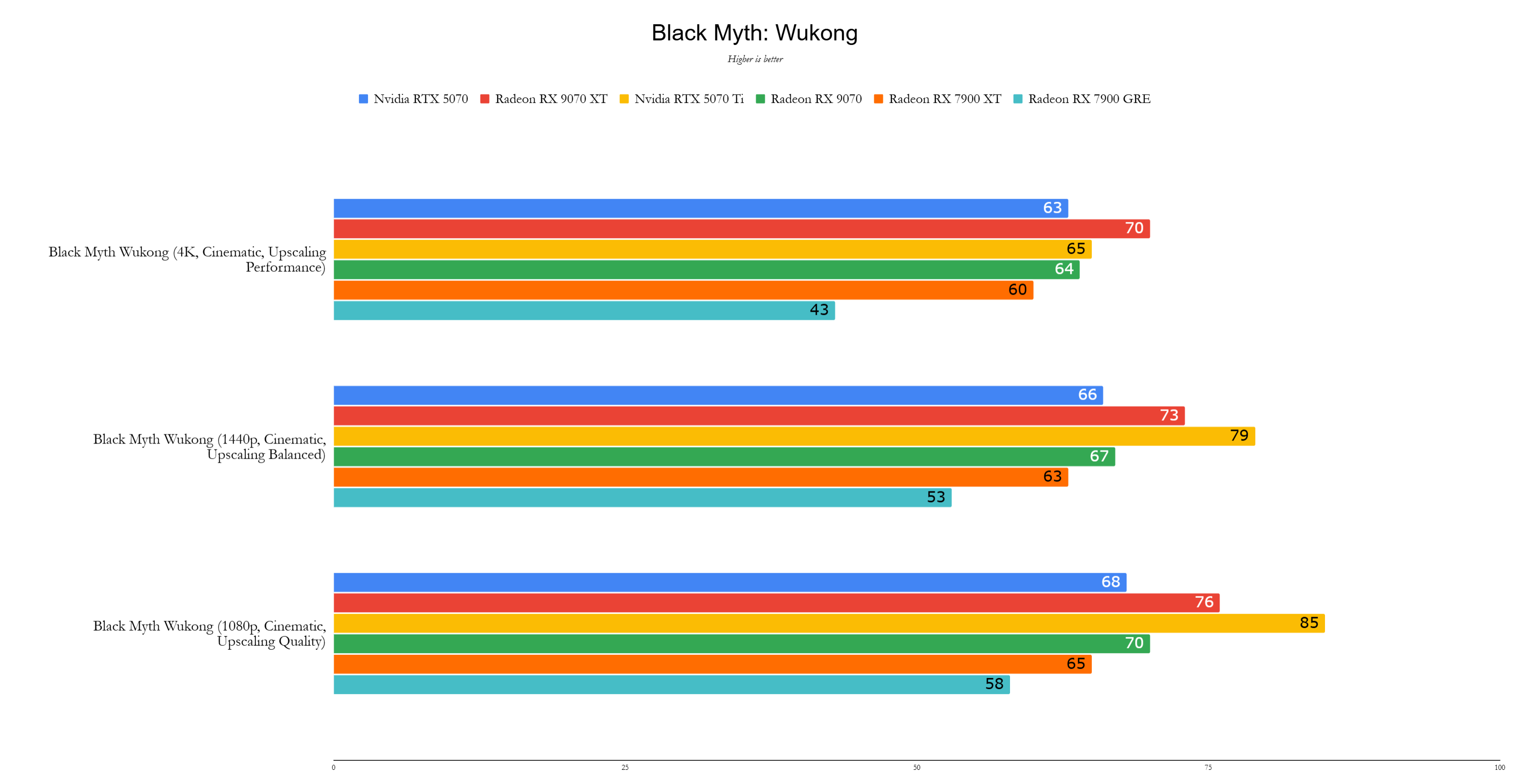 11 Images
11 Images
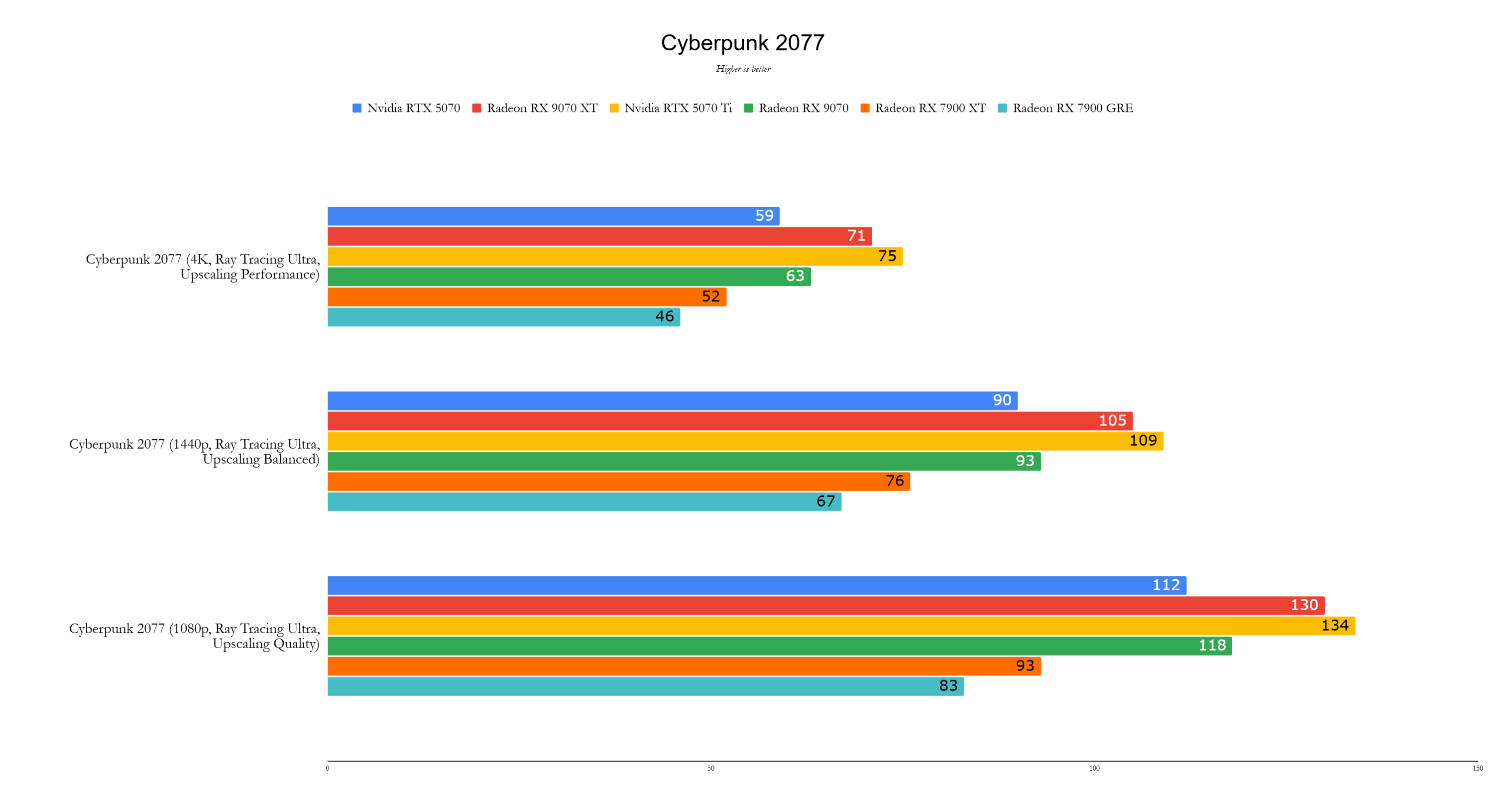
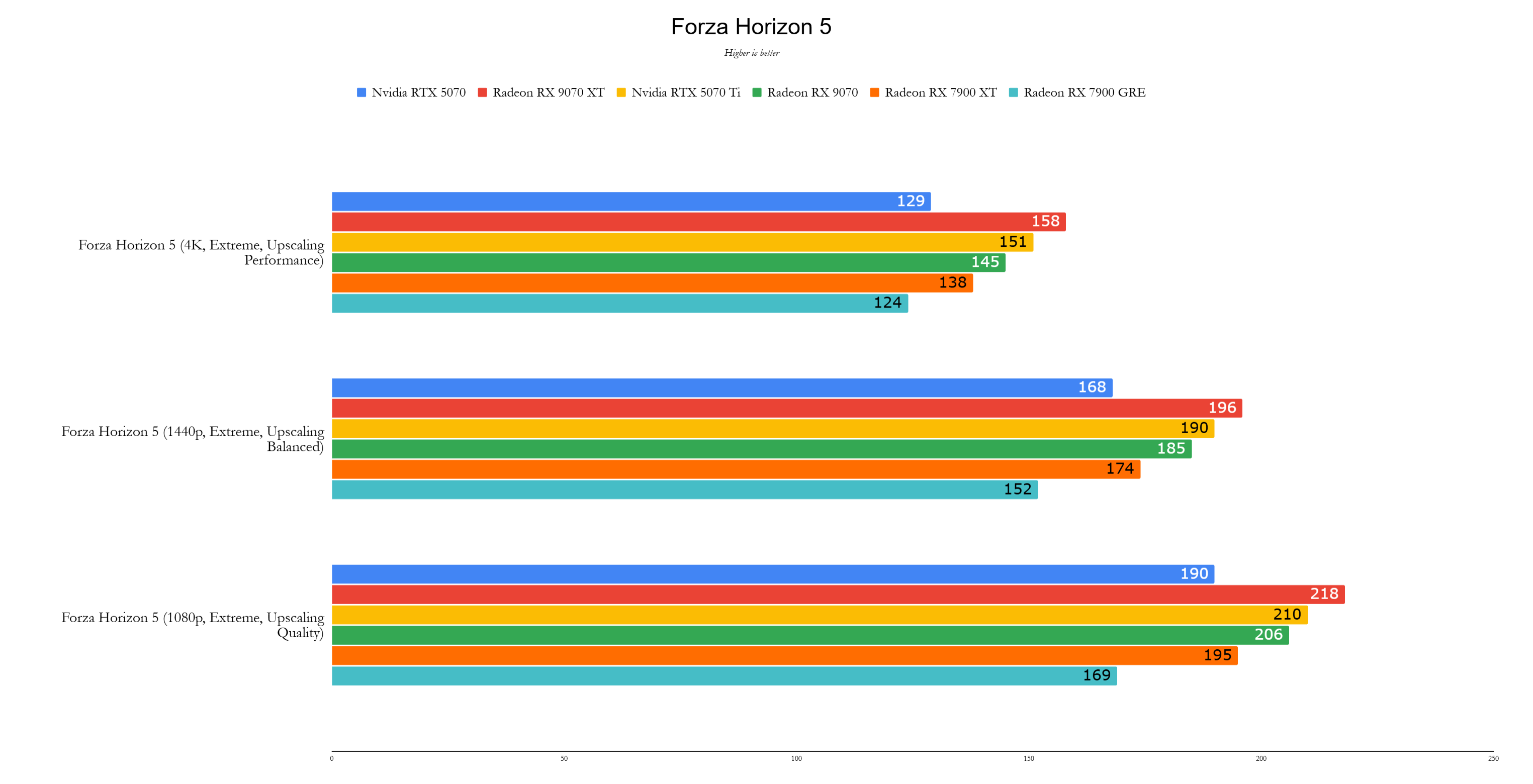
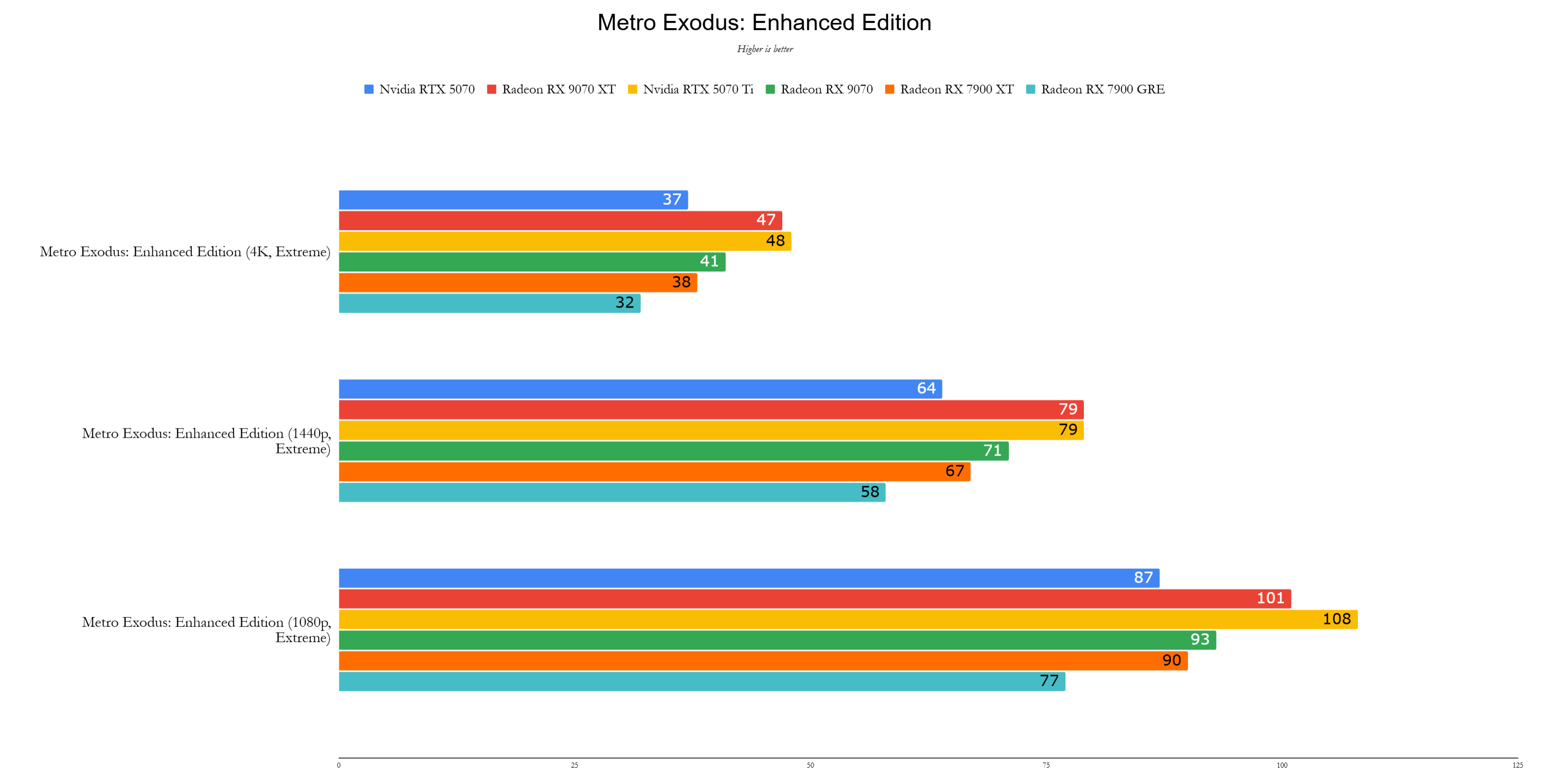
Performance
AMD's Radeon RX 9070 XT delivers impressive performance at a competitive price. Priced at $599, it undercuts the Nvidia GeForce RTX 5070 Ti by 21% yet outperforms it by an average of 2%. While the RTX 5070 Ti may excel in certain games, the RX 9070 XT's ability to compete closely is a significant achievement for AMD.
Across my test suite, the RX 9070 XT was about 17% faster than the RX 7900 XT, which launched at $899 two years ago, and 2% faster than the $749 RTX 5070 Ti. At 4K, the RX 9070 XT shines, maintaining its lead even with ray tracing enabled, making it an exceptional entry-level 4K graphics card.
All graphics cards were tested with the latest available drivers. Nvidia cards were tested with Game Ready Driver 572.60, except for the RTX 5070, which used review drivers. AMD cards were tested on Adrenalin 24.12.1, except for the RX 9070 XT and RX 9070, which used pre-release drivers provided by AMD.
While 3DMark isn't a playable game, it offers valuable insights into GPU performance. The RX 9070 XT outperforms the RX 7900 XT by 18% in Speed Way, though it trails the RTX 5070 Ti by the same margin. However, in the Steel Nomad benchmark, the RX 9070 XT's performance leap over the RX 7900 XT increases to 26%, and it even surpasses the RTX 5070 Ti by 7%.
Test System
- CPU: AMD Ryzen 7 9800X3D
- Motherboard: Asus ROG Crosshair X870E Hero
- RAM: 32GB G.Skill Trident Z5 Neo @ 6,000MHz
- SSD: 4TB Samsung 990 Pro
- CPU Cooler: Asus ROG Ryujin III 360
In Call of Duty: Black Ops 6, the RX 9070 XT leads the RTX 5070 Ti by 15%, showcasing AMD's advantage in this title. However, in Cyberpunk 2077, Nvidia's RTX 5070 Ti edges out the RX 9070 XT by just 5%, a smaller gap than in previous generations.
Metro Exodus, with heavy ray tracing and no upscaling, sees the RX 9070 XT achieving 47 fps at 4K, closely matching the RTX 5070 Ti's 48 fps. The RX 7900 XT lags behind at 38 fps, highlighting a 24% performance increase.
Red Dead Redemption 2 demonstrates excellent Vulkan scaling on the RX 9070 XT, achieving 125 fps compared to the RTX 5070 Ti's 110 fps. However, in Total War: Warhammer 3, the RX 9070 XT falls 13% behind the RTX 5070 Ti, with a modest lead over the RX 7900 XT.
Assassin's Creed Mirage sees the RX 9070 XT reclaiming its performance edge, delivering 163 fps, outperforming the RTX 5070 Ti by 12% and the RX 7900 XT by 9%. The most surprising victory comes in Black Myth Wukong, where the RX 9070 XT achieves 70 fps at 4K with the Cinematic Preset and FSR set to 40%, compared to the RTX 5070 Ti's 65 fps. This demonstrates the significant improvement in AMD's Ray Accelerators over the RDNA 3 architecture.
Forza Horizon 5 shows the RX 9070 XT maintaining its lead, achieving 158 fps compared to the RTX 5070 Ti's 151 fps, a 5% improvement.
The Radeon RX 9070 XT, quietly announced at CES 2025, feels like AMD's strategic response to Nvidia's Blackwell graphics cards. At $599, it represents a return to more reasonable pricing in the GPU market. While it doesn't match the raw power of the RTX 5080 or RTX 5090, those cards are overkill for most gamers and come with a significantly higher price tag.
The GTX 1080 Ti, launched at $699 in 2017, was the last great flagship GPU for many. While the RX 9070 XT doesn't claim the title of the fastest consumer card, it feels like the first worthy flagship since then, offering a compelling blend of performance and affordability.

